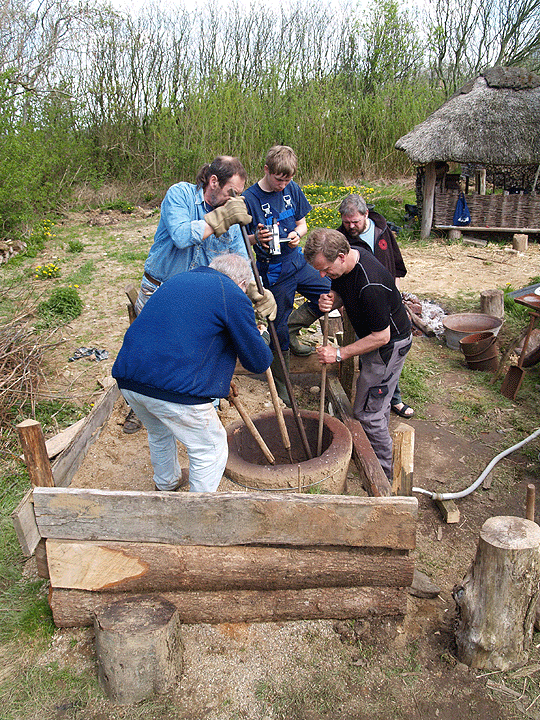On 20/09/11 4:00 AM, Jeff Evarts wrote:
... from a weekend-chemist perspective:
1) "pure" charcoal is just carbon, regardless of what it was charred from.
2) The difference between hardwood charcoal and other charcoal should
be in the density of the material (kilograms per liter) not in its
chemical content. Basically how densely packed the material itself is.
3) Densely packed carbon should have a proportionally higher energy
density, so it *should* be able to create more heat in the same amount
of space, resulting in a more efficient furnace.
4) N kilograms of charcoal will combine with M kilograms of oxygen to
make Carbon Mon/Di-Oxide gasses, so I would expect the burn rate
limiter would be the bellows throughput rather than a factor of the
type of wood used to make the charcoal charcoal.
Assumption alert: I am assuming that the air can come into equal
contact with the fuel regardless of its density, which may not be
correct.
Agricola, Theophilus and Biringuccio all specify hardwood charcoal as
well, for what that's worth.
That's a nice summary by Jeff of the 'density of carbon' aspect. (PS - Jeff's Blog is PaleoMetallurgy )
My own experience with charcoals should be considered limited. Here in North America, most commercially purchased charcoals are hardwood. Hickory and Oak are the primary woods. In Canada there are several suppliers who use Maple. I have also used one brand that was made from tropical woods, and appeared to be a mix of soft and hard woods (who knows what species).
I have fooled around a couple of times with making charcoal, but frankly, never did very well (!) Out in Newfoundland we did make a batch from local Alder (grows like bush willow, about like birch in terms of hardness.) We did not smelt with that stuff, although the blacksmith at L'Anse aux Meadows (Mark Pilgrim) does forge with it (using Norse equipments).
I think Jeff has given the hard facts. A kilogram of charcoal is a kilo, regardless of the species. The raw volume of the material would vary however.
This is likely (as a thought experiment) important in the *standard* smelting process.
- Most of us use fairly standard sized furnaces. If you kept the same furnace layout and size, using a less dense (soft wood) charcoal would mean less available carbon inside the same space.
- A softer charcoal would burn faster, inch for inch, than a harder material. Inside the same space, this means the rate of fall of your ore would also be faster = less time for the chemical process of reduction.
- I would think there would also be some kind of effect of air penetration through to the interior of the furnace as well. This may not prove significant in small furnaces with high air rates. It might tend to create lacy blooms if smaller hand powered bellows are being used.
The historic practice appears to use locally available fuels for smelting. The Norse at Vinland used the trees at hand for example - mainly Birch (no Ash or Oak there!) The design of the furnace would be modified for best results from what fuels were on hand.
When you look at the archaeology, there certainly appears to be some kind of 'ideal' shape and size for the furnace, which varies by location. The primary variable here is the ore, but there is likely a variation based on available fuel as well.
My gut feeling is that if you were using a softer wood, you would likely want to extend your stack height on the furnace. (??)
As if there was not already *enough* variables in the process!





















2 comments:
Rehder in "The Mastery and Uses of Fire in Antiquity" makes the point about volume/density that you touch on. If you measure charcoal by weight, it might not matter. But if the way you make a bloom is "6 baskets of Charcoal for every basket of ore" then you would be in trouble if those 6 baskets have a lot less engery.
I used the charcoal we had made at L'ans aux Meadows in the bead furnace. The charcoal burned hot and fast, so while it was good for getting the oven up to temp, we switched to the commercial hardwood charcoal when we started making beads. However, this doesn't take into account that the softwood charcoal Ken and Mark made was from thinner branches, and so automatically had a higher surface area.
Post a Comment